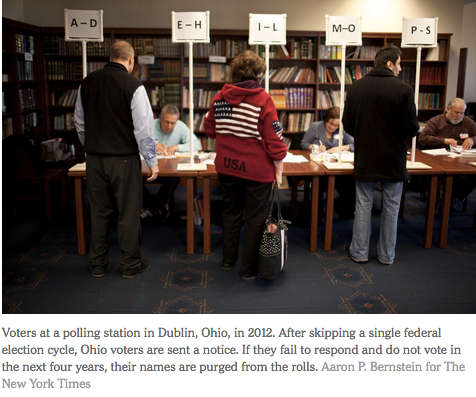WASHINGTON — Larry Harmon, a software engineer who lives near Akron, Ohio, says he is “a firm believer in the right to vote.” But sometimes he stays home on Election Day, on purpose.
In 2012, for instance, he was unimpressed by the candidates. He did not vote, he said, because “there isn’t a box on the ballot that says ‘none of the above.’”
Three years later, Mr. Harmon did want to vote, against a ballot initiative to legalize marijuana. But his name was not on the list at his usual polling place.
It turned out that Mr. Harmon’s occasional decisions not to vote had led election officials to strike his name from the voting rolls. On Nov. 8, the Supreme Court will hear arguments about whether the officials had gone too far in making the franchise a use-it-or-lose-it proposition.
Failing to vote — or deciding not to vote — is not unusual. In 2016, more than 70 million registered voters did not cast ballots, according to the United States Election Assistance Commission. That was more than a third of all registered voters.
Even in Ohio, a swing state where votes really matter, about 29 percent of registered voters did not cast ballots in 2016.
Ohio is more aggressive than any other state in culling its voter rolls based on the failure to vote. After skipping a single federal election cycle, voters are sent a notice. If they fail to respond and do not vote in the next four years, their names are purged from the rolls.




